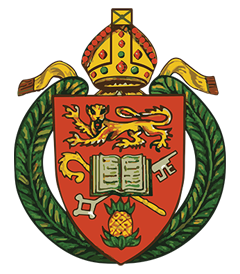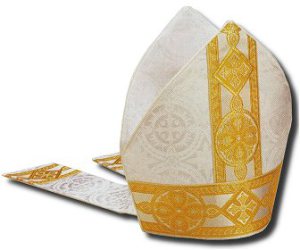Procedure for the Election of a Diocesan Bishop
The election of the Bishop of the Diocese is conducted in accordance with the provisions set out
in the Constitution and Canons of the Church in the Province of the West Indies and the
Constitution and Canons of the Church in Jamaica and the Cayman Islands. In our Diocese,
Canons XVIII and XIX set out the procedures to be followed in the election of a Diocesan Bishop.
The process begins when the retiring Bishop indicates his intention to the Archbishop or Senior
Bishop of the West Indies (Canon XXI). This is copied to the Senior Suffragan Bishop of the
Diocese(Leon Golding) who will act as Canonical Administrator of the Diocese when the vacancy
becomes effective(Jan. 1, 2025). The Canonical Administrator calls a special or next immediate
meeting of the Diocesan Council, which receives the official notification of the vacancy. The
Canonical Administrator then calls a special meeting of the Diocesan Synod and authorizes the
Secretary of Synod to send out the official notification of such special Synod.
For the Special meeting of the Synod, it is desirable that the Secretary of Synod prepares the
Electoral Roll comprising all duly qualified members of Synod: Clergy, in accordance with Canon
XIX Article 3 section 1 and sub sections a & b and Laity in accordance with Canons XLI and
XLII. Please note that the Lay membership of any Diocesan Synod should comprise the members
of the Diocesan Synod for the year in question(i.e. 2025) – those elected in the month of
January(or otherwise with permission of the Bishop/Canonical Administrator of the Diocese).
The Secretary shall then give to each member of the Synod, six weeks’ notice of a Special Synod,
in accordance to Canon IV Article 18. Canon XIX outlines in detail the procedure to be followed
in the Elective Assembly.
At the Special Synod there is to be Evensong or the Holy Eucharist the day before to open the
Synod – Canon IV Article 19 and the Holy Eucharist the next morning before the Business
Session begins.
Following the Morning Eucharist, the Special Synod is convened in the Church Hall. The
President, who is the Canonical Administrator, calls the meeting to order and it will then resolve
itself into an Elective Assembly for the conduction of the election. After prayer and a welcome,
there is a roll call. Scrutineers are appointed to verify the credentials of persons claiming the right
to be a part of the Elective Assembly. Doorkeepers are appointed to see that there are no
strangers present. If there is any, he or she will be asked to withdraw from the meeting room.
After the report of the Scrutineers is received and all is in order, and a quorum is verified by the
President, as per:
The quorum for the Elective Assembly is
(a). Three quarters of the members of the Clergy (to include Deaconesses) entitled to
sit in the Assembly,
and
(b). Three quarters of the members of the Laity(to include members of the Church Army).
Voting is done by Orders – The House of Clergy including the Bishops and Deaconesses
The House of Laity including the Church Army Officers
The purpose of the Elective Assembly will be stated. The Chancellor of the Diocese then reads
the mandate from the Senior Bishop of the Province(there being no sitting Archbishop of the West
Indies), commanding that the election be held.
Persons who are eligible for election to the position of Diocesan Bishop are Clergy in Priests’
Orders and over the age of thirty (the canonical age) from anywhere in the Anglican Communion
in the world. Persons seeking election will have to have the written support of five members of the
Synod and the candidate(s) must indicate in writing a willingness to serve in the position, if elected
– on the Nomination Form so prescribed.
The nominees withdraw from the assembly, usually to a place for quiet contemplation and
meditation, and in their absence, the Assembly will enter into a period of debate in support of the
nominees, indicating the advantages or otherwise that are likely to accrue to the Diocese by the
election of any nominee. If the Canonical Administrator (the President of the Synod) is a nominee
(and therefore withdraws), he must first, hand over the chairmanship of the Elective Assembly to
the Bishop next most senior by way of appointment, or if there be none remaining, the Archdeacon
most senior by way of appointment (who must not be a nominee).
At the conclusion of the debate the President will appoint two Clerical Tellers and two Lay Tellers
to supervise the polling. There will be a period of Prayer invoking the guidance of the Holy Spirit.
The Secretary of Synod will then instruct the Assembly how to record their votes and then the
President will declare polls open. At the end of the voting the President will declare the polls closed
and instruct the Tellers to withdraw and tally the votes.
For an election to take place, the nominee must receive not less than two-thirds of the votes of
the members present and voting, from each Order (House of Clergy and House of Laity) at the
same Ballot.
In the event that no nominee gets the required number of votes at the end of the first ballot, the
Canonical Administrator/Chairman will direct the Assembly to proceed with the casting of a second
ballot, and this will go on until (if there is need) twelve ballots are completed. See Canon XIX
Article 30.
Canon XIX Article 31 states that If any of the nominees receives less than ten per cent of the
total votes cast by both Orders in any of the Ballots, that nominee shall be deemed to have been
rejected by the Elective Assembly and that nominee’s name shall be withdrawn from any further
ballots.
If there is only one nominee, the Assembly will vote for or against that person, and the nominee’s
election will have to have the prescribed two-thirds majority of both Orders at the same ballot.
The Synod must elect the Bishop not later than six months after the vacancy is reckoned. Canon
30 Article 33 states that if the Elective Assembly fails to elect a Bishop after the casting of twelve
ballots, the right of the Elective Assembly to elect a Bishop shall cease and the Elective Assembly
shall be deemed to have delegated the choice of a Bishop to the Selection Committee.
The Selection Committee shall consist of Members of the Diocesan Council and the Diocesan
Financial Board (excluding members of the Board who are not members of Synod). The Selection
Committee may include up to four other members from without the Diocese, and includes the
Archbishop(or senior bishop) of the West Indies. The composition and mandate of the Selection
Committee is further outlined in Canon Eight (VIII).
When the business before the Special Synod (the election of the Diocesan Bishop) is concluded
or otherwise dealt with, the Synod is prorogued by the Canonical Administrator.
AFTER THE ELECTION.
After a successful conclusion, the Archbishop/Senior Bishop of the Province is notified and he will
seek the confirmation of the election by the other Bishops of the Province. Upon confirmation of
the election by the Bishops of the Province, preparations will be made for the Consecration of the
Bishop-elect, if not already in Episcopal Orders, and the Enthronement of the Bishop-elect, to the
Episcopal Seat in the Cathedral Church of the Diocese.
CREDITS TO:
The late Barbara Gloudon and
Archdeacon Winston Thomas (in 2012),
adapted by Canon Michael Elliott for 2025

